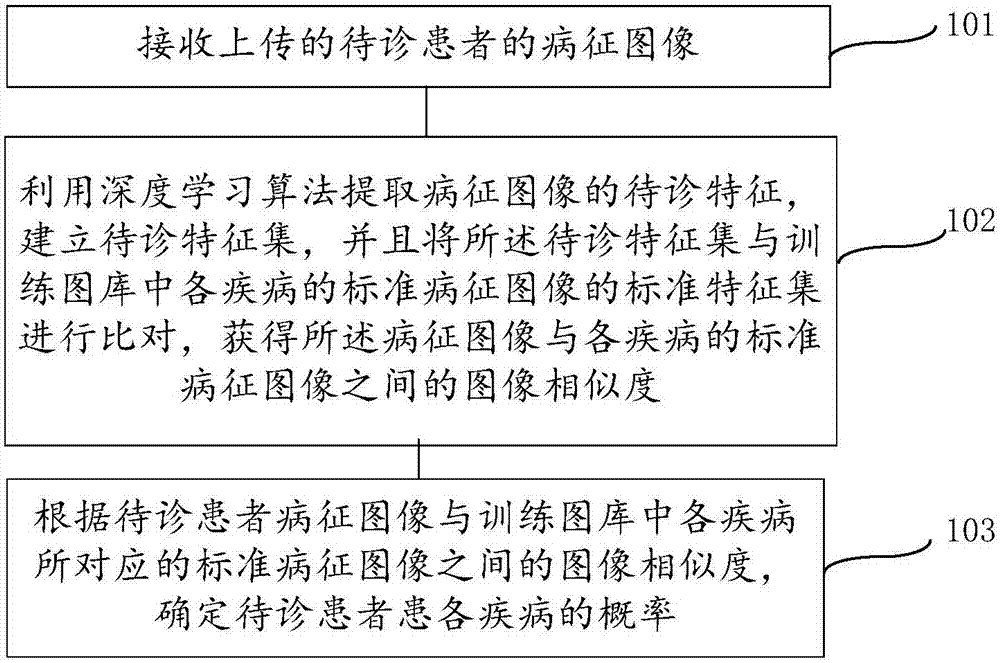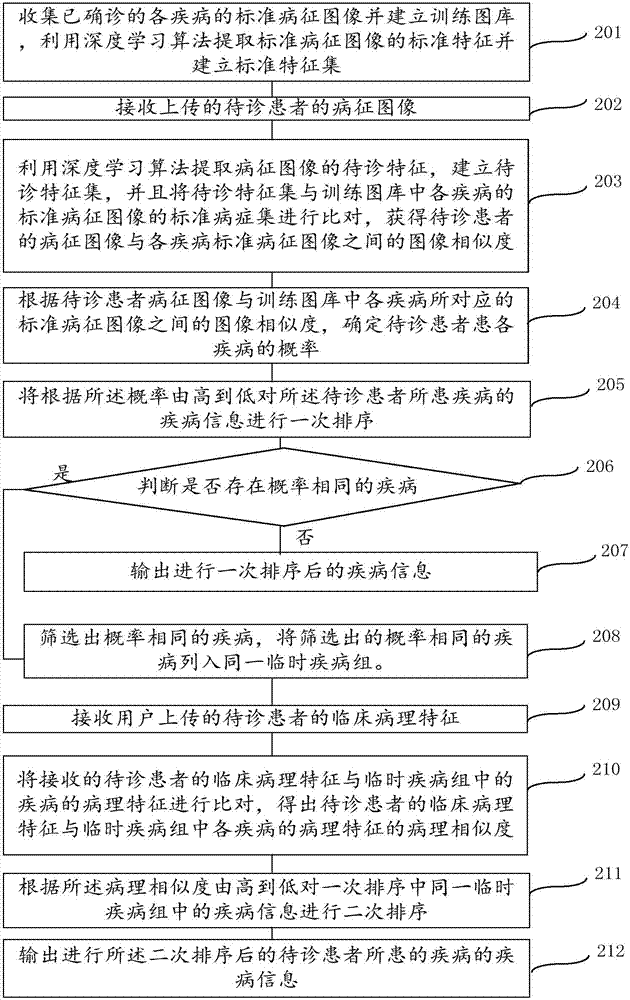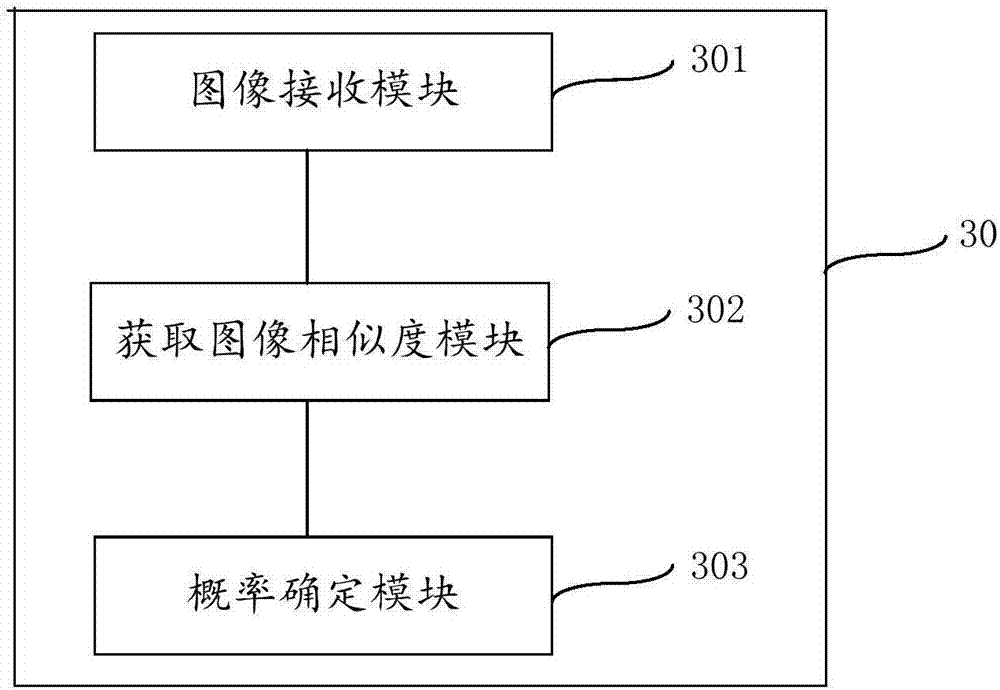Disease auxiliary diagnosis method based on image identification
An auxiliary diagnosis and image recognition technology, applied in the computer field, can solve the problems of low prevalence, trouble doctors and patients, lack of experience in rare disease diagnosis and treatment, etc., and achieve the effect of saving time and easy operation
- Summary
- Abstract
- Description
- Claims
- Application Information
AI Technical Summary
Problems solved by technology
Method used
Image
Examples
Embodiment approach 1
[0049] see figure 1
[0050] A method for aided disease diagnosis based on image recognition, including:
[0051] Step 101: receiving the uploaded symptom image of the patient to be diagnosed;
[0052] The symptom image of the waiting patient uploaded by the user is a typical feature image or image set of the waiting patient. The symptom image of the waiting patient can be collected or stored by the user in the early stage, or it can be collected by the user directly using the mobile terminal device in real time. In the present invention, the definition requirement of the symptom image of the patient to be treated only needs to be able to distinguish the specific symptom of the patient to be diagnosed by the human eye, and there is no technical requirement for photography for the image collector, thus reducing the technical requirements for the user in photography Require.
[0053] Step 102: Utilize the convolutional neural network in the deep learning algorithm to analyze ...
Embodiment approach 2
[0061] see figure 2
[0062] A method for aided disease diagnosis based on image recognition, including:
[0063] Step 201: collect standard symptom images of diagnosed diseases, and build a training library.
[0064] The standard symptom images are clinical standard symptom images of diagnosed patients with various diseases, and the training images include the standard symptom image sets of each disease.
[0065] The convolutional neural network in the deep learning algorithm is used to analyze and extract the standard features of each standard symptom image of each disease in the training gallery to establish a standard feature set.
[0066] Step 202: Receive the uploaded symptom image of the patient to be diagnosed.
[0067] The symptom image of the waiting patient uploaded by the user is a typical feature image or image set of the waiting patient. The symptom image of the waiting patient can be collected or stored by the user in the early stage, or it can be collected ...
Embodiment approach 3
[0098] see image 3
[0099] Correspondingly, in order to solve the above technical problems, another technical solution adopted by the embodiment of the present invention is to provide an image recognition-based aided disease diagnosis device 30, including: an image receiving module 301, an image similarity acquisition module 302 and a probability determination Module 303.
[0100] An image receiving module 301, configured to receive uploaded symptom images of patients to be diagnosed;
[0101] Obtain image similarity module 302, for utilizing the deep learning algorithm to extract the waiting feature of the symptom image of the patient to be diagnosed, set up the waiting feature set, and combine the waiting feature set with the standard symptom image of each disease in the training gallery Compare the standard feature set to obtain the image similarity between the symptom image of the patient to be diagnosed and the standard symptom image of each disease;
[0102] The pro...
PUM
 Login to View More
Login to View More Abstract
Description
Claims
Application Information
 Login to View More
Login to View More - R&D
- Intellectual Property
- Life Sciences
- Materials
- Tech Scout
- Unparalleled Data Quality
- Higher Quality Content
- 60% Fewer Hallucinations
Browse by: Latest US Patents, China's latest patents, Technical Efficacy Thesaurus, Application Domain, Technology Topic, Popular Technical Reports.
© 2025 PatSnap. All rights reserved.Legal|Privacy policy|Modern Slavery Act Transparency Statement|Sitemap|About US| Contact US: help@patsnap.com



